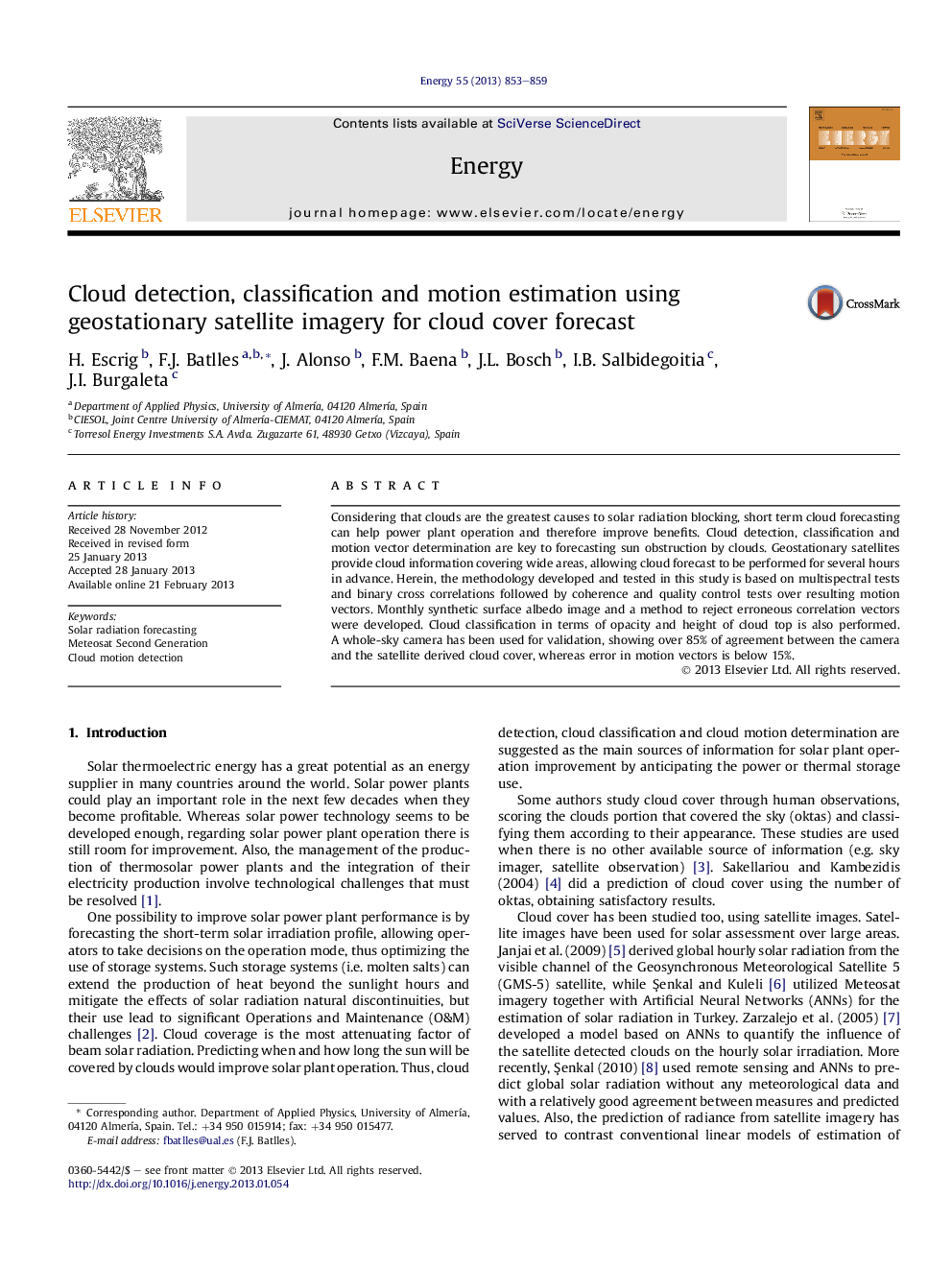| کد مقاله | کد نشریه | سال انتشار | مقاله انگلیسی | نسخه تمام متن |
|---|---|---|---|---|
| 1733021 | 1521491 | 2013 | 7 صفحه PDF | دانلود رایگان |

Considering that clouds are the greatest causes to solar radiation blocking, short term cloud forecasting can help power plant operation and therefore improve benefits. Cloud detection, classification and motion vector determination are key to forecasting sun obstruction by clouds. Geostationary satellites provide cloud information covering wide areas, allowing cloud forecast to be performed for several hours in advance. Herein, the methodology developed and tested in this study is based on multispectral tests and binary cross correlations followed by coherence and quality control tests over resulting motion vectors. Monthly synthetic surface albedo image and a method to reject erroneous correlation vectors were developed. Cloud classification in terms of opacity and height of cloud top is also performed. A whole-sky camera has been used for validation, showing over 85% of agreement between the camera and the satellite derived cloud cover, whereas error in motion vectors is below 15%.
► A methodology for detection, classification and movement of clouds is presented.
► METEOSAT satellite images are used to obtain a cloud mask.
► The prediction of cloudiness is estimated with 90% in overcast conditions.
► Results for partially covered sky conditions showed a 75% accuracy.
► Motion vectors are estimated from the clouds with a success probability of 86%.
Journal: Energy - Volume 55, 15 June 2013, Pages 853–859